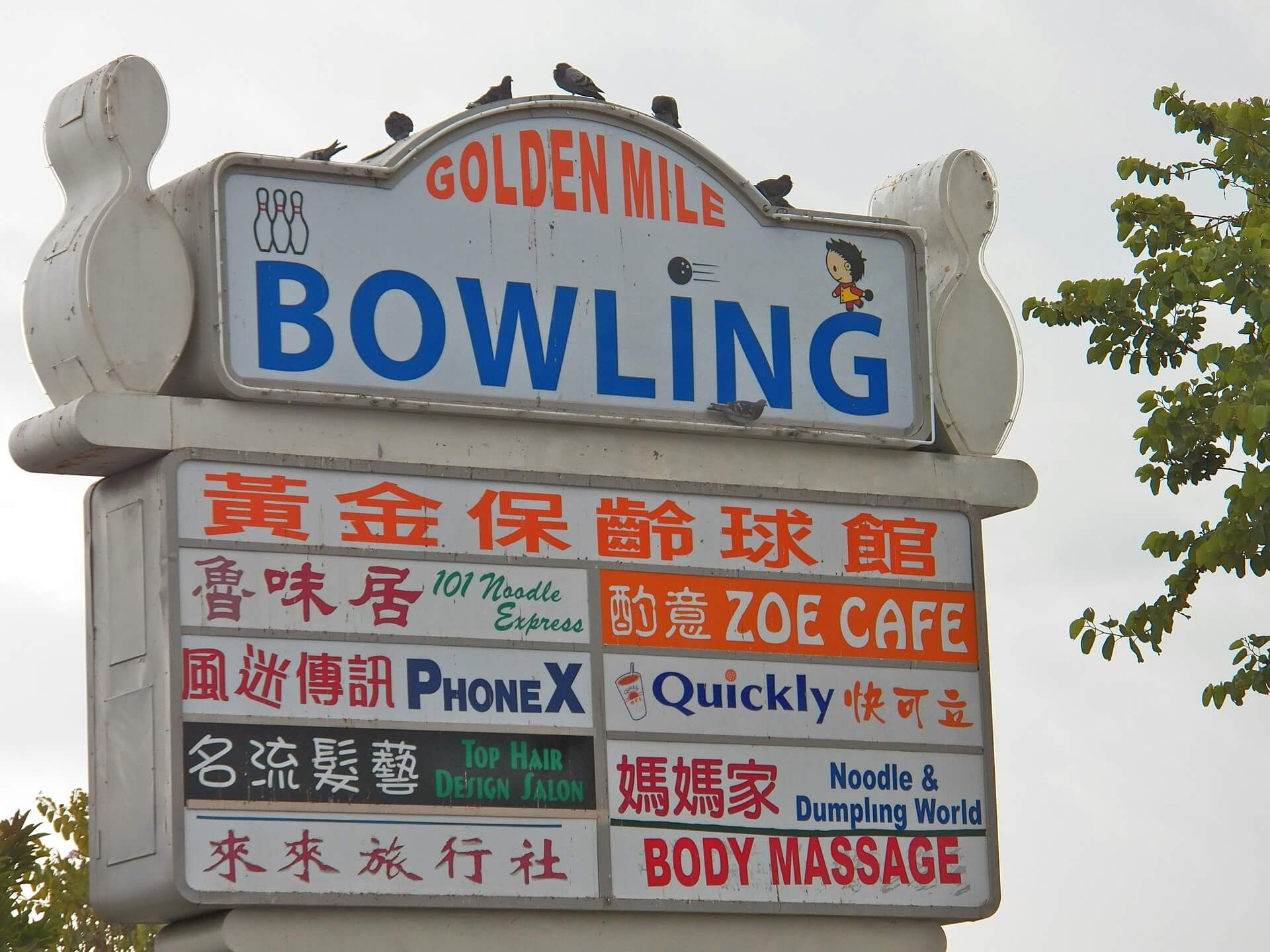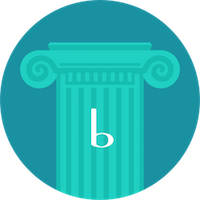English and Chinese Pronunciation have differences and similarities.
That’s the main reason for the mistakes English speakers make. Yet that also makes those mistake systematic and fixable if you know where to look.
This list includes 4 parts that cover all the phonetic aspects of mandarin pronunciation, including the tones, the initials, the finals, and the special cases.


Contents
Part 1:
Tones
Mandarin is a Tonal Language.
Most words written in Pinyin that are spelled the same but have different tones also have completely different meanings.
Therefore, being able to say the different tones clearly is very important.
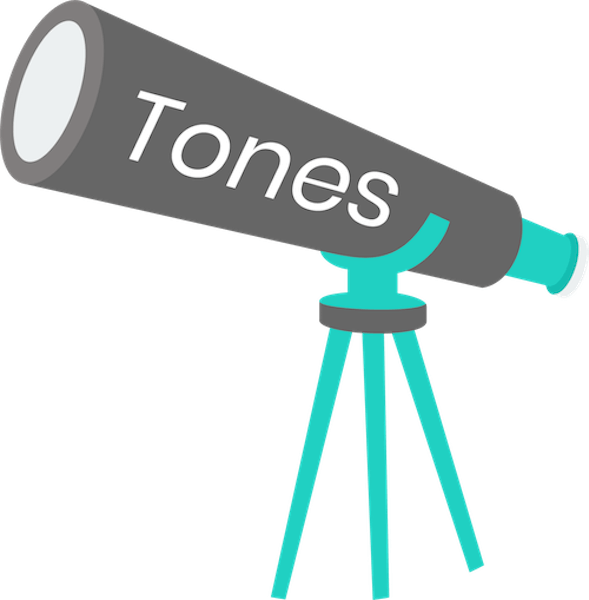
#1. When to Pronounce the Tone changes of the 3rd Tone
If you have studied Chinese for a while, you might have heard about the importance and difficulties in pronouncing the 3rd tone.
The thing is, most people can pronounce the 3rd tone right after some practice.
So pronouncing the 3rd tone is not really a problem.
However, always pronouncing the FULL 3rd tone is the mistake that a lot of people make.
The full 3rd tone, aka the original 3rd tone, is a tone that first drops from a 2 in pitch to a 1 then rises up to a 3 in pitch, 2-1-3.
However, the full 3rd tone is only used in 2 situations:
1. When a 3rd tone character is at the end of a sentence.
Example: 她喜欢你 (Tā xǐhuān nǐ)。
2. When a 3rd tone character is used by itself.
Example: 好 (Hǎo)。
So the full 3rd tone that drops and rises is only used in those situations. In most cases, the 3rd tone is pronounced with a change of tone.
When a 3rd Tone character is followed by a non-3rd tone character
The most commonly used pronunciation of the 3rd tone is a low-dropping tone where the pitch drops from 2 to 1. This tone change is used when a 3rd tone character is followed by a non-3rd tone character.
So when you make this sound, you only say the first half of a full 3rd tone, which drops from 2 to 1 in pitch.

In this word 好吃 (hǎochī),the 3rd tone character 好 (hǎo) is followed by a first tone character 吃 (chī), so the pronunciation of 好 (hǎo) changes into a low dropping 2-1 tone instead of a full 3rd tone.
When a 3rd tone character is followed by another 3rd tone character
When a 3rd tone character is followed by another 3rd tone character, the first character changes into a mid-rising tone with the pitch rising from 3 to 5.

In this word 你好 (nǐhǎo),the 3rd tone character 你 (nǐ) is followed by another 3rd tone character, so the 3rd tone in 你 (nǐ) changes to a 3-5 in pitch.
Do you think the character 好 (hǎo) in this word has a tone change too?
–好 has a full 3rd tone in this case because there is no other character after it.
SUMMARY
The actual pronunciation of 3rd tone characters depends on the tone of the character after it.
- If there is no character after it, the 3rd tone character has a full 3rd tone. (Ex.我买了新电脑。)
- If there are characters following it, and the following character doesn’t have the 3rd tone, the 3rd tone character has a low-dropping 2-1 tone. (Ex.好吃)
- If the following character also has the 3rd tone, then the first 3rd tone character has a mid-rising 3 to 5 tone. The tone change of the second 3rd tone character depends on the tone of the character after it. (Ex.你好)
Don’t have time to read the whole thing now?
No worries, just let me know where to send you a copy. It also comes with 7 extra bonus tips!

#2. Neutral Tone = “No Tone”?
Neutral tone means no tone, is what most people are taught when learning mandarin pronunciation.
But what exactly does “no tone” mean? This explanation is confusing to a lot of people. Some even avoid saying words with neutral tones because they are not sure what to do.
The truth is that: neutral tones DO have different pitches in different situations.
Neutral tones appear in the characters that are the last character in a word (refer to lesson 3 of our pronunciation course). There are 4 ways to pronounce the neutral tone depending on the tone of the character before it:
1. a Character with 1st Tone + a Character with Neutral Tone
When there is a 1st tone character before a neutral tone character, the soft neutral tone has a pitch 2 tone.

In the word 桌子 (zhuōzi), after saying the high flat tone 桌 (zhuō), quickly drop the pitch to 2 to say the short and soft 子 (zi).
2. a Character with a 2nd Tone + a Character with Neutral Tone
When there is a 2nd tone character before a neutral tone character, the neutral tone has a pitch 3 tone.
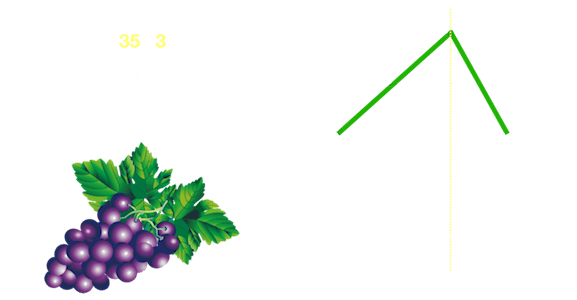

In the word 葡萄 (pútao), first say the 葡 (pú) that rises from the middle to the high pitch, then drop the pitch back to 3 to say 萄 (tao).
3. a Character with a 3rd Tone + a Character with a Neutral Tone
When there is a 3rd tone character before a neutral tone character, the neutral tone has a pitch 4 tone.
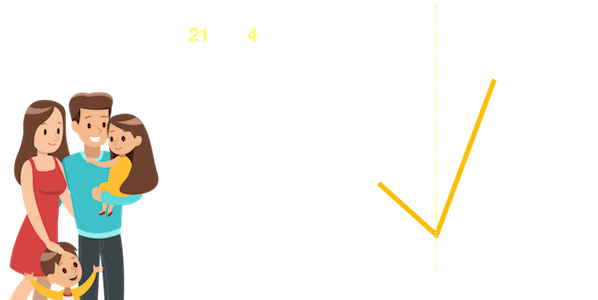

In the word 我们 (wǒmen), start by saying 我 (wǒ) which has a low-dropping 2-1 tone due to the tone change, then raise the pitch to 4 to say 们 (men) with the neutral tone.
4. a Character with a 4th Tone + a Character with a Neutral Tone
When there is a 4th tone character before a neutral tone character, the neutral tone has a pitch 1 tone.

In the word 爸爸 (bàba), start by saying the first 爸 (bà) which has a 4th tone that drops from the highest pitch 5 all the way to the lowest 1, then just maintain that low pitch and say the second 爸 (ba) short and fast.
TIP
In real life conversations, saying the exact pitch of the neutral tone is not that necessary. Because neutral tone characters are so short and quick.
So, if you can remember roughly which way to go, high or low, it’s good enough.
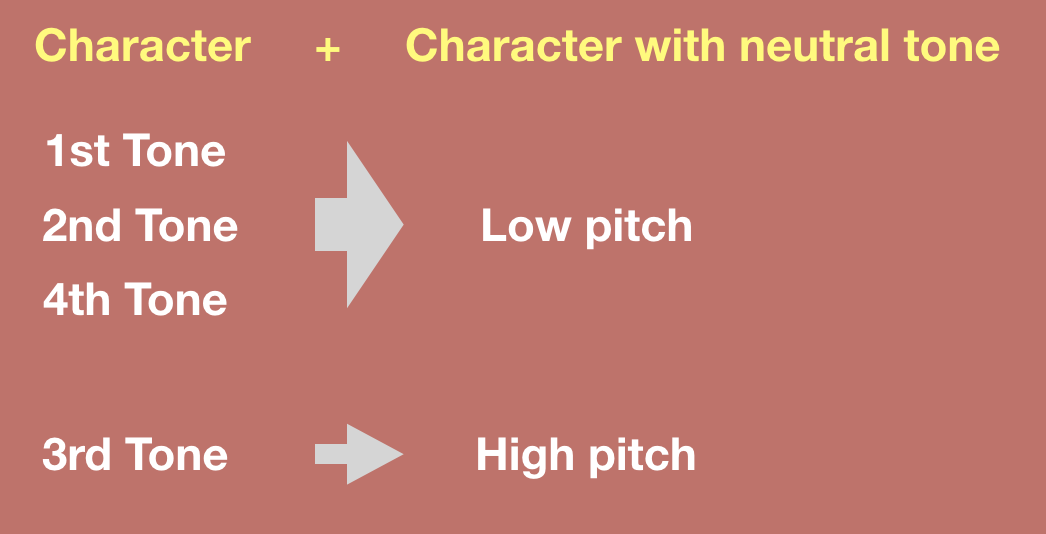
#3. Does “不” only have one tone?
不 means no in Mandarin, so its a really really useful word that’s used every day. And other than 不’s original tone, it also has a tone change in certain situations.
不’s Original Tone
不 originally has the 4th tone and is normally pronounced as its original tone.
For example:

In the graph above, The boss is saying to his employee who is late to work: “上班不可以迟到”. (Shàngbān bù kěyǐ chídào。)
The employee responds: “对不起” (Duìbuqǐ). Pay attention to the “不” in this word, it has a neutral tone.
The 4th tone is 不’s original tone and the most commonly used one.
不’s Tone Change
不 only has one tone change, that’s when a 4th tone character follows it, then 不 has the 2nd tone.
There is One More Thing You Need to Know:
The tone marks in pinyin only show the original tone of the character. That means the tone marks are always the same and the tone change and the actual pronunciation of the word is not indicated.
Learn the tone changes for other characters on mandarhythm.com
Part 2:
Initials
The consonant at the beginning of a Pinyin syllable is the initial.
There are lots of initials in Mandarin that look identical to their English counterparts but sound completely different.
Here are some of the mistakes English speakers make.

#4. “q” and “ch” Sound So Similar
These 2 sounds,“q” and “ch” in Mandarin sound very similar to a lot of people.
Now, let’s take a close look at these 2 sounds and compare their differences.
The “q” Sound in Mandarin Pronunciation
- Touch the hard palate with the surface of the tongue (the grey area in the picture).
- The tip of the tongue is against the back of the lower teeth.
The “ch” Sound in Mandarin Pronunciation
- The tip of the tongue slightly curls backward, touching the hard palate.
#5. Is “h” the Same in Mandarin and English?
The answer is NO, despite what you might have heard, the “h” sound is not the same in Mandarin and English. Here is the difference:
The English “h” as in “how”
-Doesn’t produce friction in the vocal cords when pronounced.
The Chinese “h” as in “好”
Produced by constricting air flow through a narrow channel the speaker creates by pressing the tongue against the soft palate in the back of the mouth.
There should be lots of friction in the narrow channel.
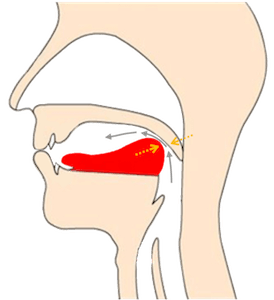
#6. Where to Put the Tongue When Saying “r”?
The “r” in Mandarin sounds similar to the English “r”, but with a small difference on the tongue positioning.
The “r” Sound In Chinese Pronunciation
– The tip of the tongue is in a bowed back position.
– The tip of the tongue vibrates while maintaining in the curled back position.
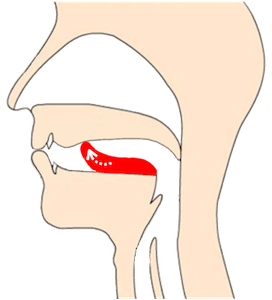
Learn the pronunciation of the letter “r” in other situations on mandarhythm.com
#7. How to Pronounce “x” in Mandarin?
The letter “x” in Mandarin has a completely different sound than its English counterpart.
The “x” Sound In Chinese Pronunciation
– Pronounce with the surface, which is the middle portion of the top of the tongue, almost touching the hard palate (the hard palate is the hard part of the roof of your mouth).
– Put the tip of the tongue behind the lower teeth.
*The arrows in the graph indicate the air flow.
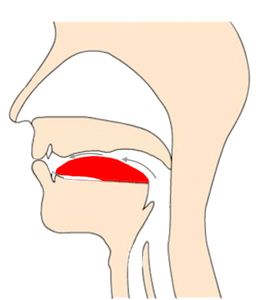
#8. The Not-So-Heavy “b”
The letter “x” in Mandarin has a completely different sound than its English counterpart.
The “b” Sound In Chinese Pronunciation
– Use your lips to make a pop sound, like the letter “p” in the English word “speak”.
– NOT the “b” in the word “bear”, because the “b” in Mandarin doesn’t involve vibration in the vocal cords.
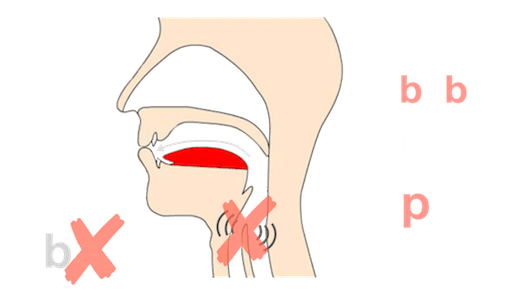

Compare the 2 words 爸爸 (bàba) and “speak”, and think of the “p” in “speak” when saying the “b” in 爸爸 (bàba).
Part 3:
Finals
Finals are the second and final part of a syllable in Mandarin Pinyin, or just any sound that follows the initial.
Finals are the only part that’s necessary in a Pinyin syllable.
There are words that don’t have initials, such as 爱 (ài). But all Chinese syllables have “the final”.

#9. The Odd “ü”
How would you pronounce this word: 去 (qù)?
Regardless of what it looks like, it should be pronounced as:
With “ü” as its final, not “u”.
Confusing “ü” with “u” because of their spelling form overlap is a mistake even some advanced Chinese learners would make.
Before we dig into that, lets first talk about:
The “ü” Sound In Chinese Pronunciation
– The tongue position of the “i” sound in Mandarin:
The tip of the tongue is behind the lower teeth while the surface of the tongue is lifted close to the hard palate.
– The mouth position of the “u” sound in Mandarin:
Press your lips together tight to form a small “o” shaped opening.

TIP
To make the “ü” sound, you can start by making the “i” sound, but make it continuous and long.
Then, put your lips together the same as you would when making the “u” sound, then you will find yourself making the “ü” sound!
When “ü” Shares the Same Spelling as “u”
– When “ü” follows the letters “j, q, x, y”, the dots on ü are not shown.
– When “ü” follows the letters “n, l”, the dots are shown.


So you can see that actually about 2/3 of the time the dots on ü are not shown. It’s important to remember those 4 letters (j, q, x & y) that erase ü’s dots so you wouldn’t confuse it with “u”.
#10. The “e” in Mandarin Pronunciation
It’s really easy to confuse the pronunciation of the letter “e” in English and Mandarin. Since the same letter “e” carries similar yet different sounds in the two languages.
The “e” Sound In Chinese Pronunciation
When the letter “e” is used by itself as a single final in Chinese syllables, it is pronounced by:
– Open your mouth into a big smile by stretching the corners of your mouth.
– Tense your tongue while contracting it backward to create the sound, using mainly just the tongue and the back of the mouth.
– The single final “e” sounds similar to the “er” sound in the word “her” in British Accent.


Compare the 2 words 喝 (hē) and “her” (in a British accent), think of the “er” sound when saying the “e” in the word 喝(hē) in Mandarin. Remember to say it with the correct tone.
#11. The “ang” in Mandarin Pronunciation
There are a lot of English words that end with “ang” (as in the words “hang”, “gang”, etc.). However, the “ang” sound in Mandarin is very different than its English counterpart.
Avoiding this mistake can be a big step forward in your Chinese pronunciation and make it sound a lot more native-like.
The “ang” Sound In Chinese Pronunciation
– Start the sound with your mouth open vertically and tongue contracted to make the back “a” sound, leaving a gap between the back of the tongue and the soft palate.
– Then lift the back of the tongue to seal that gap and let the air out through the nose.
– Remember to keep the roof of the mouth in a caved upward position the whole time.
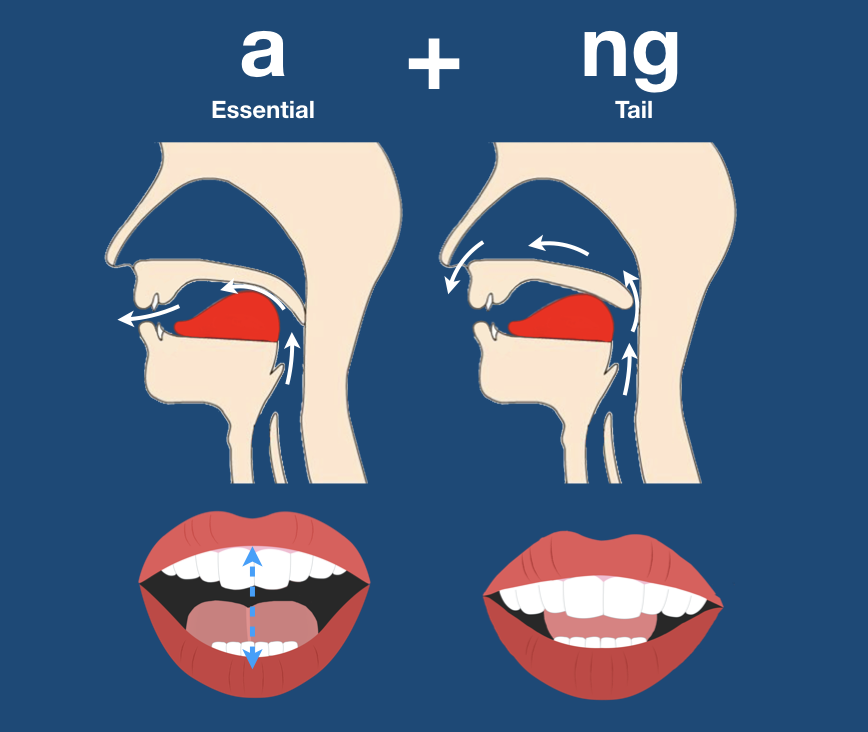
The Difference Between The “ang” in Mandarin and English
– The “ang” sound in Mandarin is NOT like how its pronounced in English, it actually sounds more like the “ung” sound in the English word hung.
– The English “ang” requires the mouth to open horizontally while the “ang” in Mandarin requires the mouth to open vertically.
– The “ang” in Mandarin is produced in the back of the mouth and sounds deeper than the English “ang”.


Compare the 2 words 行 (háng) and “hung”, think of the “ung” sound when saying the “ang” in the Chinese word 行 (háng).
But keep in mind that the “ang” in Chinese doesn’t have the excessive ending as the “ung” in English.
Learn more about the “-ng” ending in Mandarin on mandarhythm.com
Part 4:
Special Case
There are certain syllables in Mandarin that stand out more than the others.
Here is one of them that many people consider the hardest.
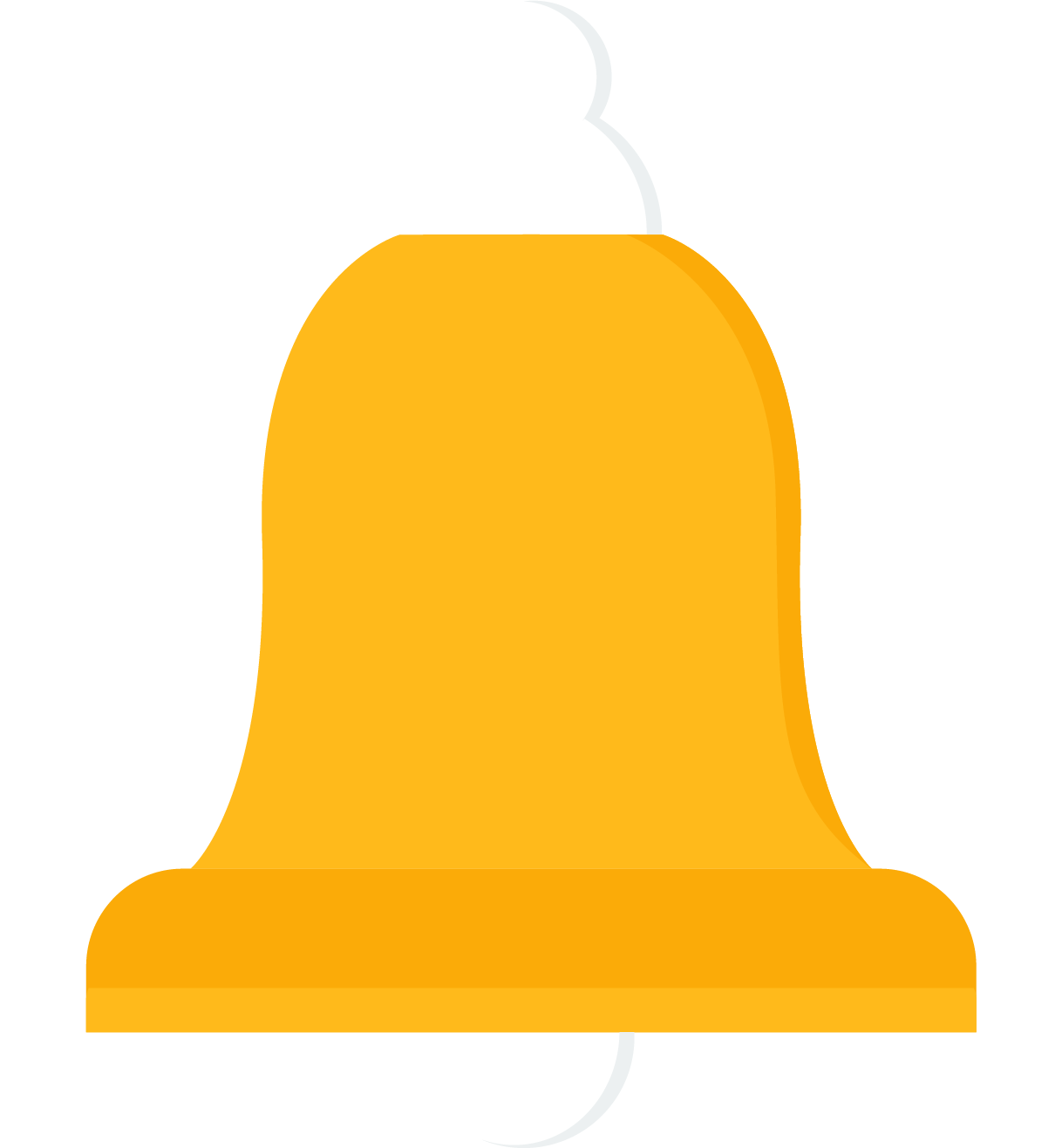
#12. The “er” in Mandarin Pronunciation
This syllable “er” in Mandarin is special because it’s an independent syllable that can’t have an Initial.
Although this sound can’t have an initial and has its own sound, the characters it represents are frequently used in daily conversations. So it’s very important to master this syllable, “er”.
This syllable sounds similar to the “er” in the English words such as “per,” but is pronounced with a different tongue position.
The “er” Sound in Mandarin Pronunciation
– The tongue contracts and rolls back.
– The tip of the tongue is close to the hard palate.
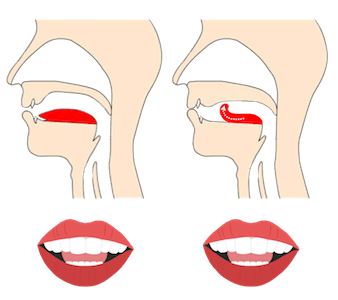
When “er” Has a 4th Tone
When “er” has the 4th tone, it’s actually pronounced slightly different than when it has one of the other tones.
The key difference is the mouth is opened even bigger vertically.
Compare the difference with 二 and 儿:
二(èr):
儿(ér):
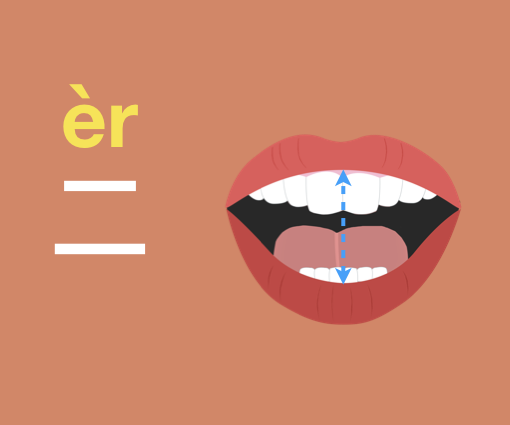
Too much information to take in?
No worries, let me send you a copy for you to review later. It also comes with 7 extra bonus tips!


